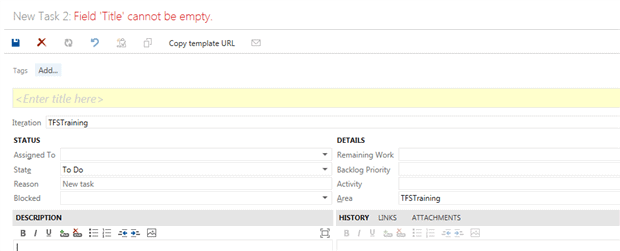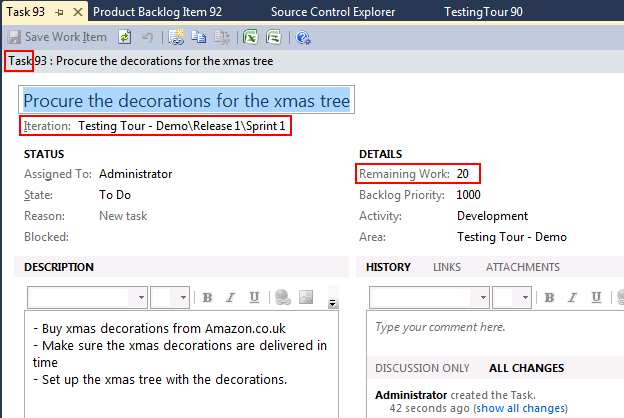Tfs Custom Work Item Templates
Corso Di Sanscrito Pdf Converter. With Visual Studio Team Foundation Server (TFS), you have an integrated toolset to manage your software projects from planning through deployment. You’ll configure most of the tools using one of the client interfaces.
Nov 13, 2009. Create a basic Work Item Custom Control for. Work Item Custom Control for Team Foundation Server. The work item template in. Work Items and Custom Controls Why Customization? Team Foundation Server (TFS) manages the entire application lifecycle using underlying process templates. Nov 12, 2009 10 thoughts on “TFS 2010 Beta 2 – Custom Work Item Controls. Step 1, Getting Started”.
To support specific workflow or business processes used by your organization, you might need to customize some objects. This topic provides a road map for what you can configure and what requires customization. The following picture shows many, but not all, of the elements that you can configure or customize. All configurations can be performed for both Visual Studio Online and TFS on-premises deployments. You need to run a command-line tool or edit an XML file to make most customizations. These types of customizations can be made for TFS on-premises deployments only. You have access to the Test Plan and Test Suite work item types (WITs) only if you’ve.
You can now customize these objects in the same way you customize other WITs. To learn more about how to update your team project, go. Backlog items refer to Product Backlog Items, User Stories, or Requirements, depending on the process template used to create your team project.
You can define Bugs to track code defects using Visual Studio and Test Manager. The starting point to accessing these tools and managing your application lifecycle is to create a team project based on a process template.
Process templates provide the default configuration of objects used to support all Application Lifecycle Management (ALM) features and functions. You can customize a process template before you create a team project, or you can customize objects afterwards. The plug-ins and object files that you can customize are shown in the following picture. Plug-ins define the tasks to perform when you create a team project, most of which configure defaults, set permissions, and upload object files. If you plan to create several team projects and want them to standardize them around the same set of objects and processes, then customize the process template before you create the team project. TFS provides three default process templates which are compared.


To learn more, see. Each team project provides several work item types (WITs) to track work. For example, the Visual Studio Scrum template provides six WITs. WITs provide the foundation for all tracking and reporting of the software development project.
You can customize the fields tracked, the workflow, and form. To learn more, see: • • To get the most out of using the Agile planning tools, you’ll want to configure them in ways that support your team’s processes.
You configure several features as shown in the following illustration. To learn more, see. Some Agile planning tools and team features require full access as described in.
•: Define personal and team email notifications when changes occur to the team project. •: Configure the tiles that appear on the team home page. •: Define team sprints to create sprint backlog pages.